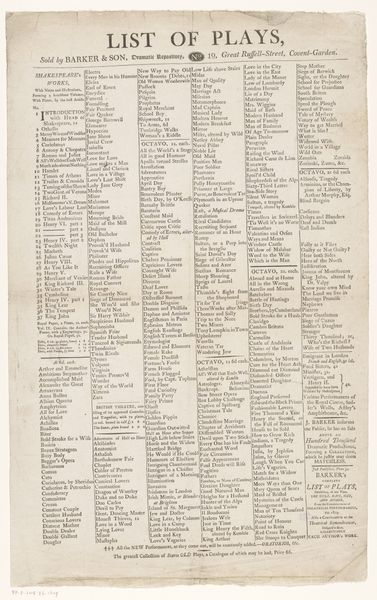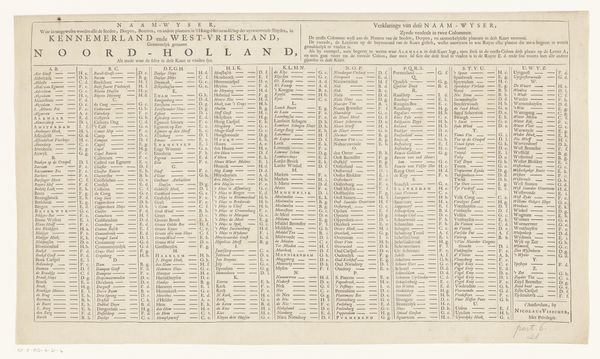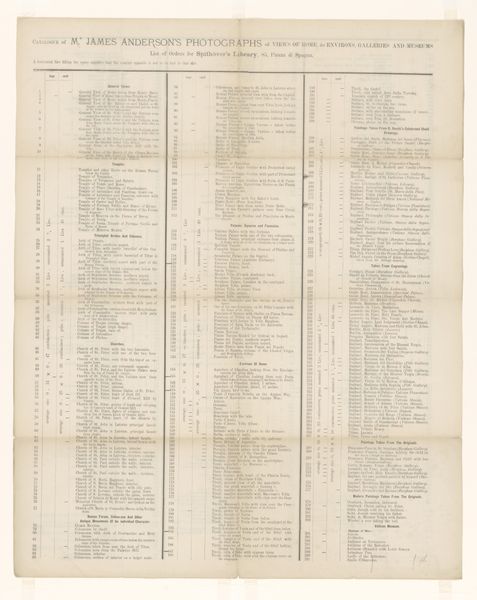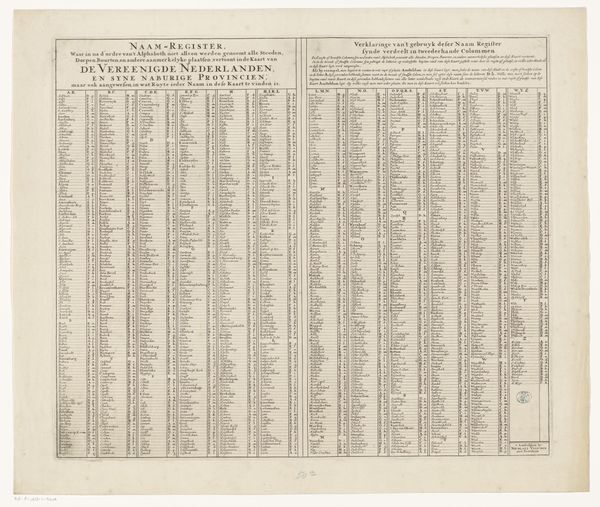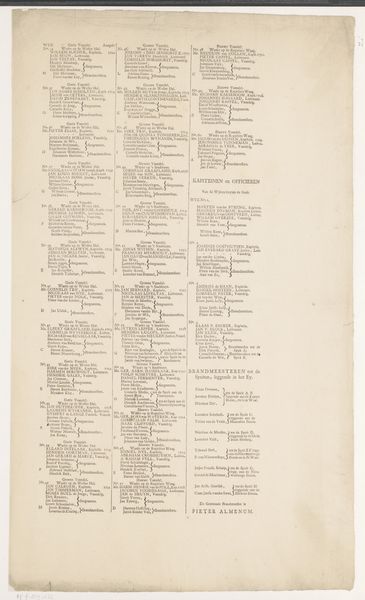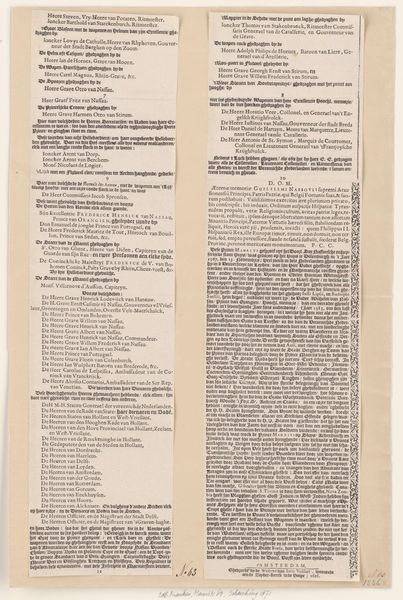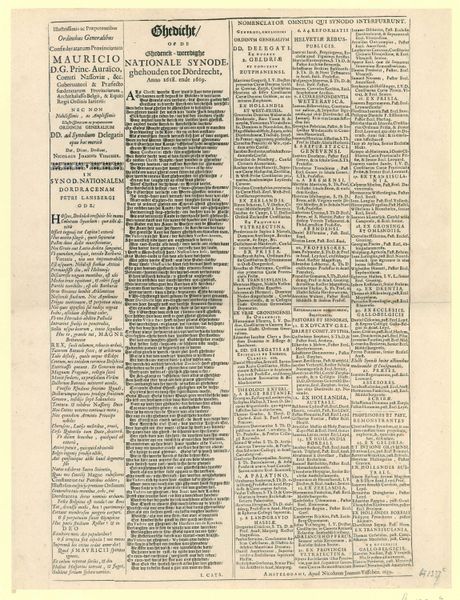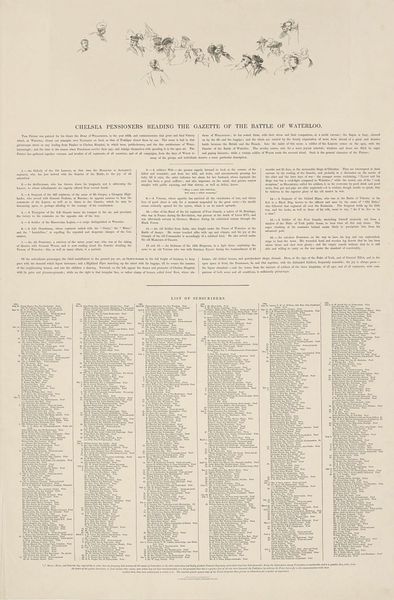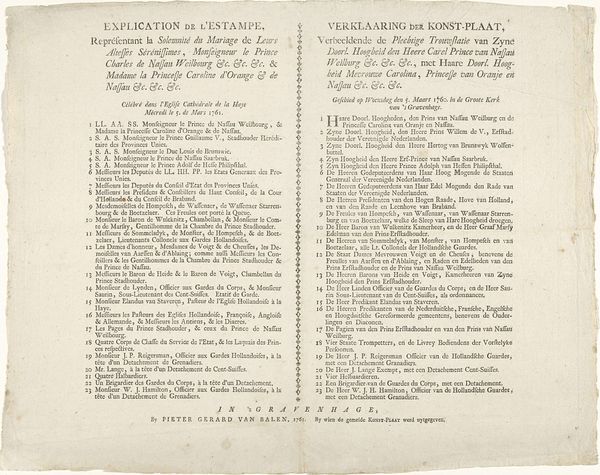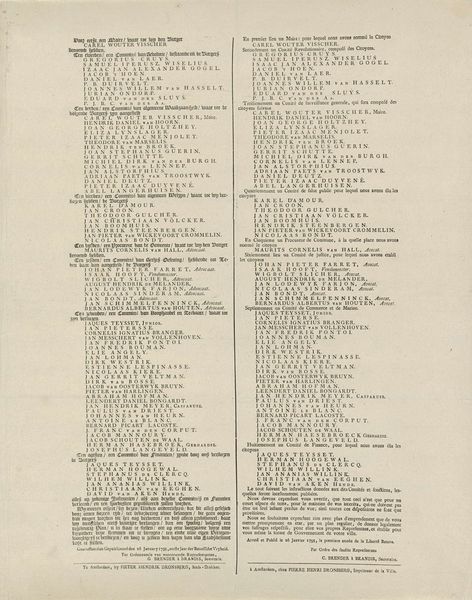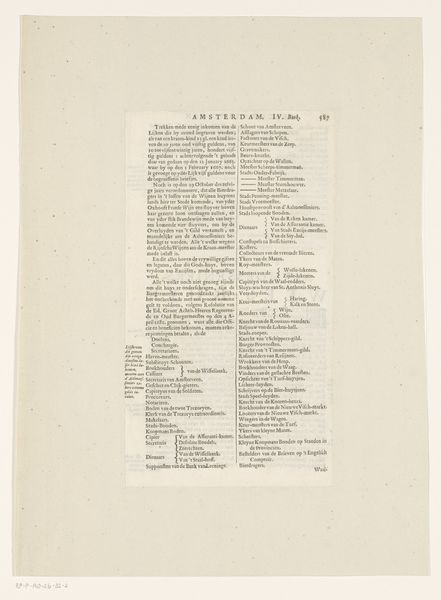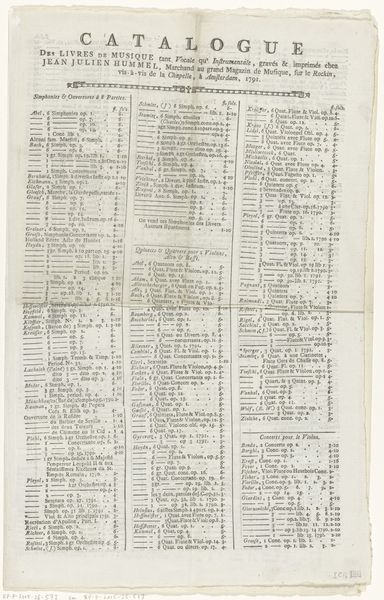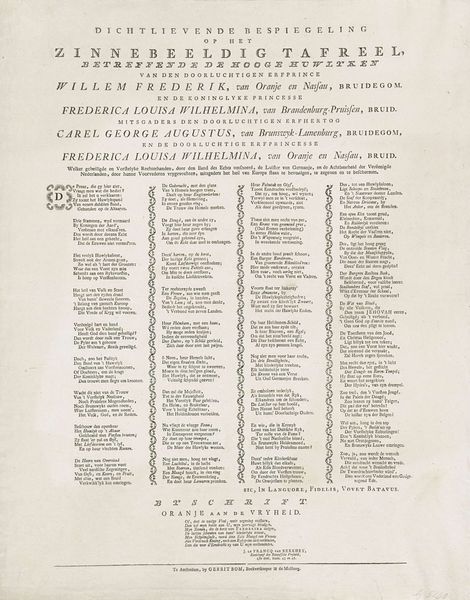
print, paper, typography
# print
#
paper
#
typography
#
romanticism
Dimensions: height 507 mm, width 377 mm
Copyright: Rijks Museum: Open Domain
Curator: This rather unassuming print, titled "Fondslijst van Charles Goulden te Canterbury", comes to us from between 1840 and 1847. It's a fascinating piece of ephemera really – a list of books offered by C. Goulden, a printer, bookbinder and stationer operating opposite the Museum in Canterbury. Editor: At first glance, it looks like a dense wall of text, the kind that makes your eyes glaze over. The material condition and printing style suggests functionality over beauty; it's quite overwhelming but has its own kind of rhythmic, textural beauty, in the density of the typographic landscape. Curator: Absolutely. What intrigues me is that this isn’t merely a commercial document; it’s a cultural artifact. We get a snapshot into the literary tastes and interests of the time, presented in columns offering periodicals and collected works available in Canterbury during that period. Consider the range listed – novels, religious texts, children’s stories… Editor: Which speaks to production as an essential cultural act itself. Beyond the content, the very process of mass printing meant these stories became more widely accessible, thus spreading these values more easily to more readers through more hands. To be "Cheaper than any House in Kent," as it advertises, reveals competitive economic dynamics. What books are excluded and what does that tell us? Curator: It really does force us to consider this object not only as a seller's catalog but an index of the period's intellectual and social atmosphere. There's an aspiration in the listing too – an offer of knowledge, self-improvement and perhaps escape from daily life. Editor: The labor involved is palpable. Each item listed represents hours of writing, typesetting, printing, and distributing. It wasn't simply about filling shelves; it was about fueling an engine of cultural creation. Consider too the implications of paper manufacturing and typography and the industrial revolution it fomented. Curator: Thinking about this piece and our time today, so many digital listings replace this sort of item; yet holding it in our hands connects us to a very specific, sensory engagement with that bygone world of books and ideas. It stirs in me, quite oddly, a longing for this quieter mode of consuming information and engaging in cultural activities. Editor: Right, we need to go beyond the face value and ask fundamental questions, what are the politics, and aesthetics implicit in the design and material history of the printed catalog?
Comments
No comments
Be the first to comment and join the conversation on the ultimate creative platform.
